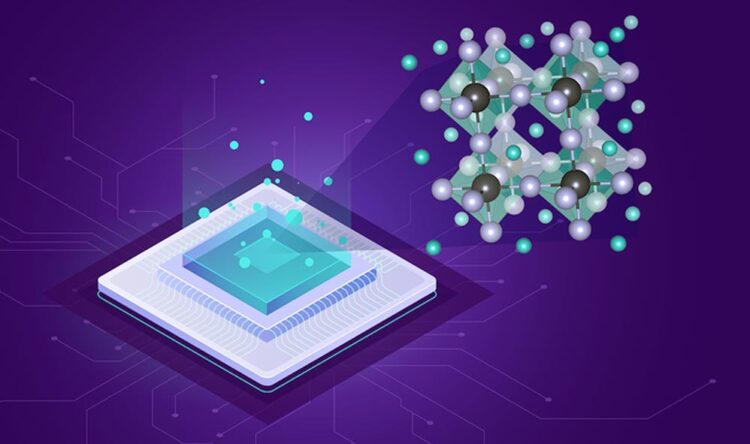PERSEPHONe: developing a novel technological platform for photonics based on perovskites

Metal halide perovskites towards integration into silicon photonic platforms
Credit: IIT-Istituto Italiano di Tecnologia
A new training programme for young researchers.
PERSEPHONe has received funding as part of the EU’s Horizon 2020 research and innovation programme in the framework of Marie Skłodowska-Curie Actions (MSCA).
A new training programme for young researchers has started: PERSEPHONe (PERovskite SEmiconductors for PHOtoNics). It is a joint research training and doctoral programme, implemented by a partnership of highly ranked universities, research institutions and industrial research partners spread over 6 different countries.
The project will involve 14 Early Stage Researchers, who have been selected to develop a novel technological platform for photonics based on an emerging class of semiconductors, metal-halide perovskites, with exceptional optical and electrical properties. The goal is to make this novel technology commercially viable in different sectors from medical diagnostics to environmental monitoring, telecommunications and robotics.
PERSEPHONe has received a total funding of 3.75 million euros as part of the EU’s Horizon 2020 research and innovation programme in the framework of Marie Skłodowska-Curie Actions (MSCA) and it will last 4 years.
The project’s coordinator is Dr. Annamaria Petrozza, who leads the “Advanced Materials for Optoelectronics” Research Group at IIT’s Center for Nano Science and Technology (CNST) in Milan. Petrozza is an expert in solution processable semiconductors and in time-resolved optical spectroscopy. In 2014, she received the “Innovators Under 35 Italy” award by the MIT Technology Review for her pioneering work on perovskites; and in 2017 and 2020 she was awarded with an ERC Consolidator and an ERC Proof of Concept grant on the investigation of fundamental properties of perovskites.
Thanks to the PERSEPHONe training network, early stage researchers will be exposed to a wide spectrum of expertise, from materials design to their embodiment in devices. Each fellow will learn how to deal with complex problems, acquiring broad competences and becoming highly adaptable. They will be aware of their skills and attitudes and spend them efficiently in both corporate and academic environments. The key to success of such Programme is the multidisciplinarity and inter-sectoriality of the network, which will allow the young researchers to genuinely discover their attitude while having an impact on a relevant scientific and technological field.
In this network, the multiple differences of background and know-how of the partners will converge to push the boundaries of today’s conventional technologies. The great versatility of perovskites will be the key to enable new functionalities and the direct integration onto existing photonic platforms.
The project’s consortium is led by IIT-Istituto Italiano di Tecnologia (Italian Institute of Technology), and involves 12 main partners that belong to different sectors of R&D, academic and industrial, such as Politecnico di Milano, Università Federico II di Napoli, Linkoping University (LiU), Universitat di Valencia (UVEG), Agencia Estatal Consejo Superior de Investigaciones Cientificas (CSIC), ETH Zurich, University of Oxford, AMO Aachen, IBM Research Zurich, DECTRIS and Helio Display Materials.
Website: https://persephoneitn.eu/
Twitter: @NePersepho
Media Contact
Valeria delle Cave
Istituto Italiano di Tecnologia – IIT
valeria.dellecave@iit.it
Office: 0039 010 2896
PERSEPHONe: developing a novel technological platform for photonics based on perovskites. – iiTalk
All latest news from the category: Materials Sciences
Materials management deals with the research, development, manufacturing and processing of raw and industrial materials. Key aspects here are biological and medical issues, which play an increasingly important role in this field.
innovations-report offers in-depth articles related to the development and application of materials and the structure and properties of new materials.
Newest articles
Faster, more energy-efficient way to manufacture an industrially important chemical
Zirconium combined with silicon nitride enhances the conversion of propane — present in natural gas — needed to create in-demand plastic, polypropylene. Polypropylene is a common type of plastic found…

Energy planning in Ghana as a role model for the world
Improving the resilience of energy systems in the Global South. What criteria should we use to better plan for resilient energy systems? How do socio-economic, technical and climate change related…

Artificial blood vessels could improve heart bypass outcomes
Artificial blood vessels could improve heart bypass outcomes. 3D-printed blood vessels, which closely mimic the properties of human veins, could transform the treatment of cardiovascular diseases. Strong, flexible, gel-like tubes…





















